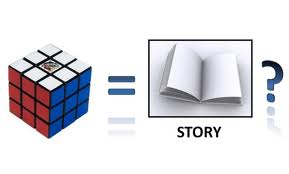 Structure is the most important technical aspect of any story. It brings solidity and focus to a story; yet it is often overlooked and misunderstood. Novelists sometimes believe structure will sap their stories of originality. But structure is nothing more than a roadmap — a time-tested archetype for crafting the rise and fall of action and character evolution within our stories.
Structure is the most important technical aspect of any story. It brings solidity and focus to a story; yet it is often overlooked and misunderstood. Novelists sometimes believe structure will sap their stories of originality. But structure is nothing more than a roadmap — a time-tested archetype for crafting the rise and fall of action and character evolution within our stories.
Story structure
The classic approach to structure divides story into three acts which some authors, will also argue, can be broken down further into nine. So, how can we make structure as easy as possible? Structure presents difficulties because it gives us a lot of stuff to remember all at once. Beyond that, we’re also faced with the question of how we structure our stories when we may not yet have any idea what happens in them. Structure is applicable no matter your personal writing process.
This is when outline comes in. How does outlining create story structure?
Outlines allow us to brainstorm important moments in our stories and figure out how all the pieces fit together. We save time and stress in the long run, by using outlines to figure out dead ends and speed bumps, so we can avoid them during the time-intensive first draft.
Whether your outlines consist of a mental list of major scenes, or notebooks full of detailed planning, you’ll be sitting down to your first draft with a structure of sorts already in mind. This structure won’t necessarily be story structure as defined above. But you will at least have a shape of the story in your head. You’ll know its beginning, middle, and end.
You can identify and plan major structural points before writing the first draft. You can see your entire story at a glance, helping you identify inconsistencies in plot and character arcs. You get the opportunity to count scenes and estimate word counts, so you can time major plot points. They act as a checklist of sorts, against which you can double-check the existence of overall structural points before diving into the messiness of the first draft. You can use your outline as your dry-erase board for explorations of and experiments with ideas, preventing the need to delete hundreds or even thousands of words. Structure, in turn, will guide you in identifying your major plot points. From there, you can figure out how best to fill in the blanks.
Some authors prefer to use this list of structural events as the outline. You can go ahead and dive into your first draft without knowing anything more about what happens between the pit stops on your roadmap. Or you can use your knowledge of these events to guide you in fleshing out your outline even further.
Proper story structure is never a choice. We each have to identify and create the processes that will help us maximize both our creativity and productivity. And for most of us, the outline will be our greatest tool in building strong stories with spot-on structure.


